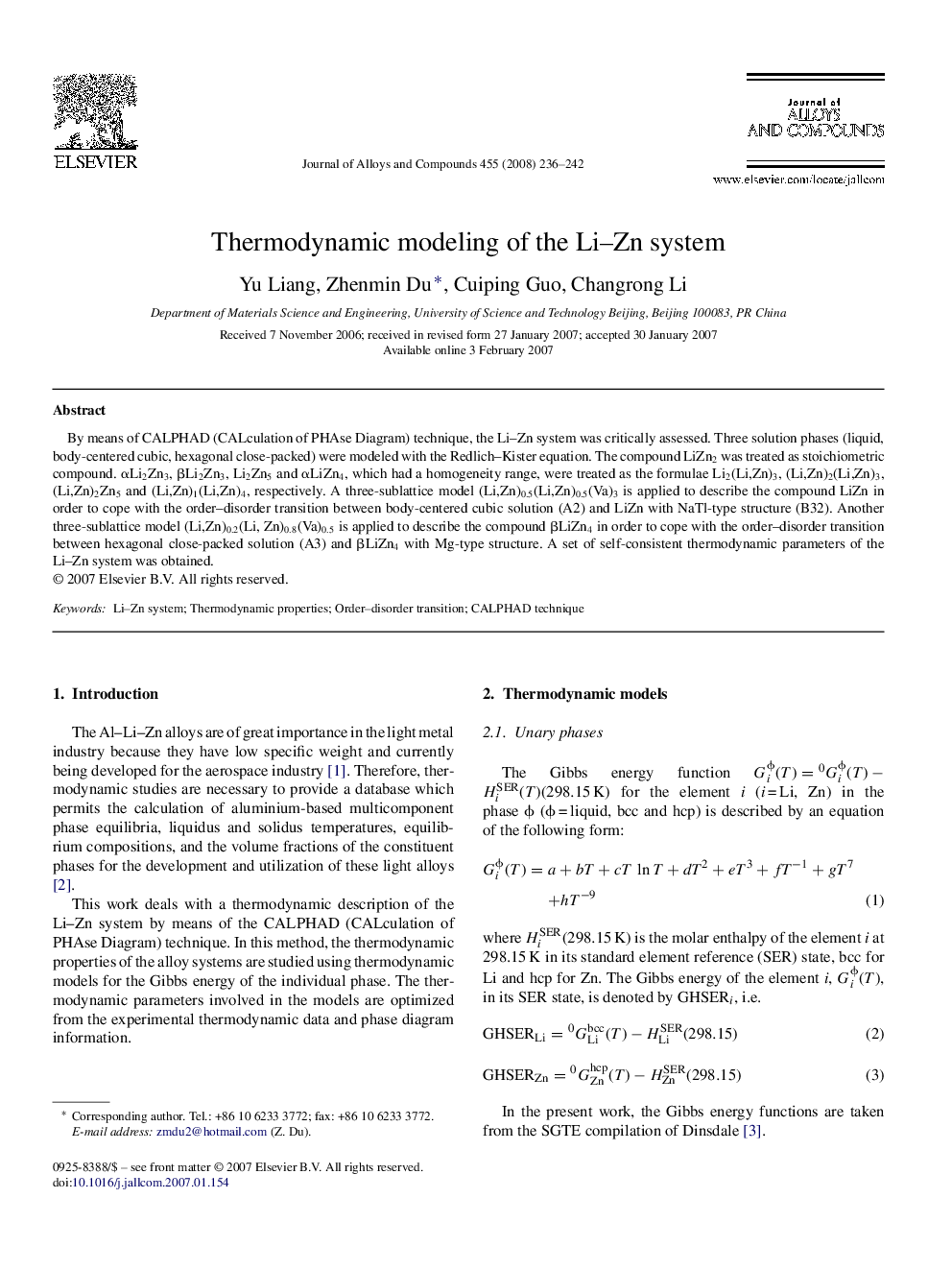| Article ID | Journal | Published Year | Pages | File Type |
|---|---|---|---|---|
| 1624624 | Journal of Alloys and Compounds | 2008 | 7 Pages |
Abstract
By means of CALPHAD (CALculation of PHAse Diagram) technique, the Li-Zn system was critically assessed. Three solution phases (liquid, body-centered cubic, hexagonal close-packed) were modeled with the Redlich-Kister equation. The compound LiZn2 was treated as stoichiometric compound. αLi2Zn3, βLi2Zn3, Li2Zn5 and αLiZn4, which had a homogeneity range, were treated as the formulae Li2(Li,Zn)3, (Li,Zn)2(Li,Zn)3, (Li,Zn)2Zn5 and (Li,Zn)1(Li,Zn)4, respectively. A three-sublattice model (Li,Zn)0.5(Li,Zn)0.5(Va)3 is applied to describe the compound LiZn in order to cope with the order-disorder transition between body-centered cubic solution (A2) and LiZn with NaTl-type structure (B32). Another three-sublattice model (Li,Zn)0.2(Li, Zn)0.8(Va)0.5 is applied to describe the compound βLiZn4 in order to cope with the order-disorder transition between hexagonal close-packed solution (A3) and βLiZn4 with Mg-type structure. A set of self-consistent thermodynamic parameters of the Li-Zn system was obtained.
Related Topics
Physical Sciences and Engineering
Materials Science
Metals and Alloys
Authors
Yu Liang, Zhenmin Du, Cuiping Guo, Changrong Li,
